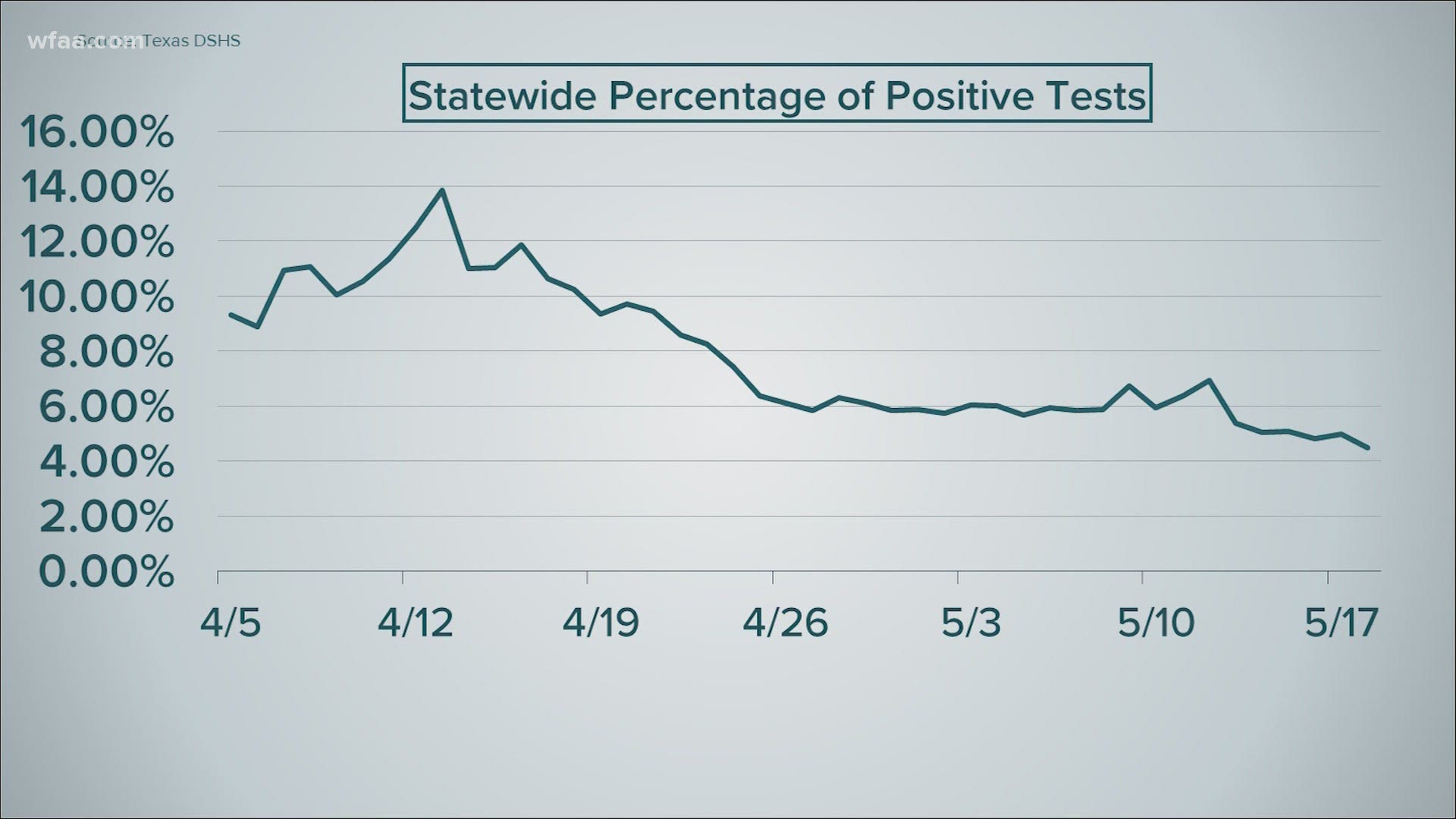In his reopening press conference Monday, Gov. Greg Abbott pointed to several different numbers to indicate how well the state is handling the COVID-19 pandemic.
One number is the percentage of people being tested who test positive.
Dr. Mark Casanova leads the Dallas County Medical Society and says that rate can be misleading since there are a lot of different variables.
“The numbers we’re going to look at are going to eventually morph and evolve,” he said. “We have to really separate the state from regions of the state.”
The 7-day state average had dropped for two weeks before the governor’s first reopening announcement on April 27, but it has stayed steady since then, until this week when labs across the state reported results from a backlog of tests.
That weekly average is now 4.47% as of Monday, the lowest it’s been.
The rate is an even lower 3.00% in Collin County and 4.10% in Denton County, but it’s more than twice as high in Tarrant County at 11.41% and Dallas County at 10.14% as of Monday afternoon, according to state statistics.
While tests are increasing, who is being tested is changing, going from people with symptoms to just about anyone at risk. Now the state will begin testing everyone at nursing homes, which only make up about 6% of cases statewide.
Testing people who are less likely to have the virus will cause the rate to decrease, even if the virus is still spreading at the same rate.
Casanova points to hospitalization as a good indicator that’s less dependent on testing.
“In the next week or two, we’re going to be monitoring very closely to see if there is an uptick in hospitalizations,” Casanova said.
Across North Texas, the number of hospitalized patients had been rising since mid-April but has stayed about the same the past two weeks while available beds in the region have slowly dropped as more people go back to the hospital for less serious issues.
“The relaxation of restrictions coincided with our peak so now we have essentially reset our new normal,” Casanova said. “We’re really seeing a plateau.”
Across both Tarrant and Dallas counties about 30 to 40% of people who were hospitalized ended up in an intensive care unit.
The disease also doesn’t just affect the elderly.
Statewide, 75% of cases are people under 60. And in Dallas County, two-thirds of those hospitalized have been under 65.
“Even if you’re healthy, even if you’re young, bear in mind that this virus can take you down, it can land you significantly ill,” Casanova said. “Looking at hospitalizations alone gives us the earliest reliable indication that things are getting worse or better
The message is Just about any number by itself can be used to paint a certain narrative, and they should be looked at together.
For health directors to Casanova, the advice of the people who review the numbers daily hasn’t changed: wash hands, wear a mask and limit trips outside of a home.
“As we loosen restrictions and as we as individuals embark into society at large, we’re feeding the potential for the virus to transmit from one individual to another," Casanova said.
More on WFAA:
- First COVID-19 patient admitted to Methodist Charlton ICU released after 57-day hospital stay
- Class of 2020 seniors take over Texas Motor Speedway for unique graduation that was big on social distancing
- Texas daycare facilities can reopen, bars can open at limited capacity Friday, says Gov. Greg Abbott
- Checklist: How Texas bars will operate when they can reopen May 22
- Nursing homes should be virus-free for 28 days before opening, feds warn

